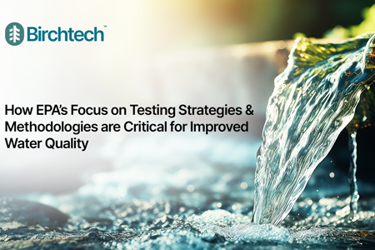How EPA's Focus On Testing Strategies & Methodologies Are Critical For Improved Water Quality

The Environmental Protection Agency (EPA) has unveiled a comprehensive strategy to combat PFAS contamination, led by Administrator Zeldin. This initiative targets both air and drinking water, emphasizing enhanced research, technology, and industry collaboration. A key focus is on improved testing strategies under the Toxic Substances Control Act (TSCA), which grants the EPA authority over chemical regulation. The agency's efforts include expanding testing under the Safe Drinking Water Act (SDWA) and updating the Unregulated Contaminant Monitoring Rule (UCMR 5), requiring water utilities to monitor 29 PFAS compounds and lithium between 2023 and 2025. Recently, the EPA also proposed extending compliance deadlines for PFAS monitoring from 2029 to 2031.
In alignment with these federal initiatives, Birchtech’s RSSCT Analysis Design Center provides a practical, cost-efficient solution for utilities to enhance PFAS detection. Established in 2024, the center offers Rapid Small Scale Column Testing (RSSCT), allowing utilities to quickly evaluate and optimize carbon filtration methods. By providing precise, data-driven insights, Birchtech helps water utilities navigate the evolving regulatory landscape, ensuring compliance while minimizing costs. This convergence of regulatory innovation and advanced testing solutions reflects a nationwide commitment to safeguarding water quality.
Get unlimited access to:
Enter your credentials below to log in. Not yet a member of Water Online? Subscribe today.
